Are you looking to welcome a new feline member into your family? Have you considered both the Savannah and Bengal cat breeds, but don’t know which one is right for you? Try not to be overwhelmed; this blog post is here to help!
In this article, we will explore some of the key differences between these two gorgeous cats. You’ll learn about their different looks, personalities, behaviours and even health care needs – everything you need to make an informed decision when choosing your perfect pet.
So don’t wait any longer – read on now and find out which breed might be best for you!
History of Bengal Cats
The Bengal cat is a relatively new breed that was created by crossing Asian leopard cats with domestic breeds in the 1960s.
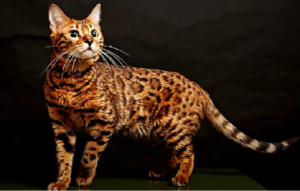
This was done to create a beautiful and unique looking pet, as well as one that retained some of the wild instincts and behaviours typical to their wild ancestors.
History of Savannah Cats
Savannah cats, on the other hand, are much more recent. The breed was created in 1986 by a breeder who crossed an African Serval with a domestic cat. This hybrid offspring had many of the same markings as the serval but with a more docile temperament – making them ideal for indoor living.

What Are All the Differences Between Bengal Cats and Savannah Cats?
The main differences between Bengal cats and Savannah cats lie in their physical appearance, temperament, and energy level. Let’s take a look at them all:
- Physical Appearance: Bengal cats are medium to large sized with short fur that tends to be spotted or marbled. They have long legs, big ears, and almond-shaped eyes. Savannah cats, on the other hand, have a larger and taller frame with long fur that is often striped or marbled. They have medium-sized ears and striking yellowish-green eyes.
- Temperament: Bengal cats are known to be curious, playful, and affectionate. They also tend to be quite vocal and enjoy interacting with their owners. Meanwhile, Savannah cats are more independent and can become shy around strangers. They also require more patience when it comes to training as they tend to have a mind of their own.
- Energy Level: Bengal cats tend to be very active with lots of energy, while Savannah cats are calmer and more laid-back. Bengal cats crave daily playtime with their owners, whereas Savannah cats will be content with a few hours of activity. [1]
Bengal Cat Overview
Appearance
Bengal cats have a stunning appearance, with a medium to large build, short fur that is often spotted or marbled in design, long legs and big ears. They also have almond-shaped eyes and an impressive tail.
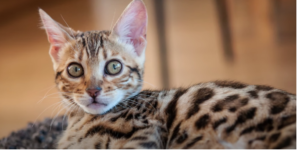
Maintenance
This breed’s short fur means that it is less likely to become matted than a longer-haired breed. However, Bengals should still have their nails trimmed regularly and have a checkup at the vet twice a year.
Temperament
Bengal cats are known for their curious, playful and affectionate nature. They enjoy interacting with their owners and can be quite vocal.
Savannah Cat Overview
Appearance
Savannah cats have a striking look, with a large and tall frame, long fur that is often striped or marbled in design and medium sized ears. They also have impressive yellowish-green eyes.
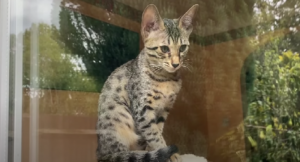
Maintenance
Savannah cats have minimal grooming needs. Their fur is easy to care for and does not require frequent brushing or bathing. However, it should still have its nails trimmed regularly and have a checkup at the vet twice a year.
Temperament
Savannah cats are more independent than Bengals and can be shy around strangers. They require a lot of patience and dedication when it comes to training, as they have a mind of their own. [2]
Which Breed is Right for You?
Both the Bengal and Savannah cats can make great pets that will provide years of love and companionship. It all comes down to which breed fits your lifestyle best.
Whichever breed you choose, you will have a loyal and loving companion for years to come!
Are Savannah Cats Bigger Than Bengal Cats?
Typically, yes. Savannah cats tend to be larger and taller than Bengal cats, with a more muscular build. They also have longer fur that is often striped or marbled in design compared to the Bengal’s short fur that is usually spotted or marbled.

However, it should be noted that both breeds can vary in size and look slightly different from one another.
Are Bengal Cats More Expensive Than Savannah Cats?
Yes, Bengal cats tend to be more expensive than Savannah cats. This is due to their rarity and popularity as a breed. Additionally, purebred Bengals can cost significantly more than mixed breeds or those with less generations of pedigree behind them.
In general, Bengals are considered an investment – so it’s always best to do your research before making a purchase.
Should you Buy a Savannah Cat or Bengal Cat?
It ultimately depends on your lifestyle and personal preference. Bengal cats tend to be very active with lots of energy, while Savannah cats are calmer and more independent.
While both breeds require regular grooming, Bengals need a bit more maintenance due to their short fur.
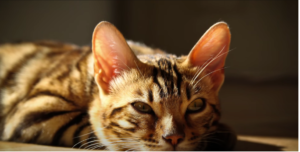
If you are looking for an interactive and affectionate cat that loves attention – the Bengal is the right choice for you. On the other hand, if you prefer a more independent cat that doesn’t require as much attention – the Savannah is a great option.
FAQ
How can I tell if my cat is a Savannah cat?
You can usually tell if your cat is a Savannah by its distinctive markings – they tend to have large, striped or mar shapes on their fur. Additionally, Savannah cats tend to be larger and taller than other breeds.
Do Bengal cats get along with other animals?
Yes, Bengals typically get along well with other animals in the home. However, it’s important to introduce them slowly and carefully in order to ensure a smooth transition.
Are Savannah cats affectionate?
Yes, Savannah cats are typically very affectionate with their owners. They enjoy interacting with their people and can form strong bonds over time.
Do Savannah cats need a lot of attention?
No, Savannah cats do not need a lot of attention. They are independent cats that can be content with a few hours of activity each day and minimal interaction with their people.
Are Bengal cats good family pets?
Yes, Bengal cats typically make great family pets as they are very active and interactive. They enjoy playing with children and can provide years of love and companionship.
Are Bengal cats noisy?
Yes, Bengals can be quite vocal – they may meow or chirp when they are excited or want attention from their people. However, this behaviour can usually be modified with proper training.
What makes Bengal cats different?
Bengal cats are unique due to their short, spotted or marbled coats and energetic personalities. They are also highly intelligent and very interactive with their people – making them a great choice for families who love to play and interact with their pets.
Are Savannah cats good climbers?
Yes, Savannah cats are excellent climbers. They have strong, muscular legs and their large paws make them adept climbers. Additionally, they are agile jumpers that can reach great heights with ease.
Do Bengal cats require a lot of grooming?
Yes, Bengals do require more grooming than some other breeds due to their short fur. It’s important to brush your Bengal at least once a week to keep their coat looking shiny and healthy.
Additionally, regular nail trimming and teeth brushing are also recommended for optimal health.
Do Savannah cats get along with other cats?
Yes, Savannah cats typically do well with other cats in the home. They enjoy interacting and playing with one another, as long as proper introductions have been made.
Additionally, Savannah cats can also get along well with dogs in the home – making them an ideal choice for multi-pet households.
How can you tell a Bengal cat?
Bengal cats can be identified by their distinct markings – they typically have large, striped or marbled shapes on their fur.
Additionally, Bengals are usually taller and heavier than other breeds.
They also tend to be very vocal, so you may notice that your Bengal is always meowing or chirping when it wants your attention.
What’s the difference between a Savannah cat and a regular cat?
The most notable difference between a Savannah cat and a regular cat is the size – Savannah cats tend to be larger and taller than other breeds. Additionally, they have distinctive markings on their fur that are usually striped or marbled shapes.
Finally, Savannah cats tend to be more active and independent than regular cats, so if you’re looking for a low-maintenance pet, a Savannah may be the ideal choice.
Are there any health issues associated with Bengal cats?
Yes, Bengal cats can be prone to certain health issues such as hip dysplasia and respiratory problems. It’s important to consult your veterinarian for advice on how to best care for your Bengal and keep it healthy.
Additionally, regular check-ups and vaccinations are recommended to help ensure your Bengal stays in good health.
Do Bengal cats always meow?
No, Bengal cats don’t always meow. While they may be more vocal than other breeds, Bengals can also chirp or purr when they are content.
Additionally, some Bengals may not make any noise at all and will simply come up to their people for attention when they want it.
Do Bengal cats meow differently?
Yes, Bengal cats may meow in a deeper or higher pitched voice than other breeds. Additionally, Bengals may also be more vocal and talkative when compared to other cats.
This can make them very entertaining to watch and listen to – making them great companions for people who love animals that are interactive and engaging.
What’s the best way to care for a Savannah cat?
The best way to care for a Savannah cat is to provide it with plenty of love, attention and stimulation. Since they have such an active personality, it’s important to give them lots of opportunities to play and explore.
Additionally, regular grooming and veterinary check-ups are also important for keeping your Savannah cat healthy and happy.
What type of environment is best suited for a Savannah cat?
Savannah cats are adaptable to many environments but they do best in homes with plenty of space and activities. It’s important to provide your Savannah with lots of toys, scratching posts, and interactive playtime.
Additionally, it’s recommended that you keep them indoors at all times, as Savannahs are not suited for outdoor life.
Is it easy to train a Bengal cat?
Yes, Bengals can be quite intelligent and eager to learn new things. With patience and positive reinforcement, you can successfully train your Bengal to do simple tasks such as coming when called or using the litter box properly.
Additionally, it’s important to set clear expectations for your Bengal and provide lots of rewards when they do something well. With consistency, you can successfully train your Bengal cat.
What type of environment is best suited for a Bengal cat?
Bengal cats thrive in environments where they are able to engage their minds. Providing them with stimulating activities such as scratching posts and interactive toys can keep them entertained throughout the day.
Additionally, it’s important to provide them with a safe and secure environment where they feel comfortable and secure. It’s also recommended that Bengals be kept indoors at all times to protect them from predators and other dangers.
What are some of the unique personality traits of a Bengal cat?
Bengal cats are known for their intelligence and inquisitive nature. They tend to be active and playful, but also enjoy plenty of cuddle time with their people. Additionally, Bengals can be quite vocal and talkative – making them great conversation partners!
They are loyal and affectionate, and have a tendency to bond closely with their owners. All in all, Bengal cats make wonderful, entertaining companions.
How often should a Bengal cat be groomed?
Bengal cats should be groomed at least once a month to keep their coats healthy and free of mats and tangles. Additionally, regular nail trims are also important for keeping your Bengal’s paws in good shape. Be sure to consult your veterinarian for advice on grooming products and techniques that are safe for your Bengal cat.
Do Savannah cats get along with other pets?
Yes, in general Savannah cats can be socialised to get along with other pets. However, it’s important to introduce them slowly and in a controlled environment in order to reduce any potential aggression or territoriality.
Additionally, it’s important to ensure that your Savannah cat has plenty of space and resources to avoid any potential conflicts. With patience and proper training, it is possible for a Savannah cat to get along with other pets.
Are Bengal cats cuddly?
Yes, Bengals can be quite cuddly! These cats tend to bond closely with their owners, and enjoy spending quality time with them. They are affectionate and playful, but also appreciate plenty of cuddle time when they are feeling tired or stressed.
It’s important to provide your Bengal cat with consistent love and attention in order to ensure that their emotional needs are met.
How much exercise do Savannah cats need?
Savannah cats can be quite active, and require plenty of exercise to stay healthy. It’s important to provide your Savannah with toys and activities that will engage their minds and bodies.
Additionally, regular playtime sessions with interactive toys such as wand toys or laser pointers can help keep them in shape. It’s also important to provide your Savannah cat with plenty of room to roam, as they need spacious areas in order to stay active.
How often should Bengal cats be bathed?
Bengal cats generally don’t require frequent baths. In fact, too much bathing can strip the oils from their fur and skin, which can cause irritation. Instead, it’s recommended to spot clean your Bengal cat when necessary using a mild shampoo or cleaner.
Additionally, regular brushing will help keep their coats in good condition and reduce the need for frequent baths. Be sure to consult your vet for advice on appropriate grooming techniques and products.
How much do Savannah cats eat?
The exact amount of food your Savannah cat needs will depend on their age, size, and activity level. Generally speaking, most adult Savannah cats require 2-3 ounces of high quality wet or dry food per day.
However, it’s important to consult your vet for recommendations as every cat is different. Additionally, regular feeding times and appropriate portions help ensure that your Savannah cat stays healthy.
How can I tell if my Bengal cat is happy?
In general, a happy Bengal cat will be active and interactive – they tend to show their joy through playtime and cuddling. Additionally, you may notice that your Bengal purrs more often or interacts with other family members more frequently when they are content. Pay attention to your Bengal’s behaviour and body language to get an idea of their overall mood.
If you notice any signs of stress or unhappiness, it’s important to take your cat to the vet for a check-up.
How do I keep my Savannah cat entertained?
The best way to keep your Savannah cat entertained is to provide them with plenty of interactive toys. Cat wands, balls, and puzzle feeders are all great options for engaging your feline friend.
Additionally, giving them access to comfortable hiding spots and scratching posts can help reduce stress and improve their mood.
Why is my Bengal cat so vocal?
Bengal cats are known for their distinct and often loud meows. They may meow to communicate or get attention from their owners.
Additionally, they may be telling you that they’re feeling hungry, lonely, or bored – so it’s important to pay attention to your cat’s vocalisations and provide them with the necessary care.
Do Savannah cats like to be cuddled?
Savannah cats can be quite affectionate and enjoy snuggling up with their owners. However, it’s important to give your cat the space they need in order to feel safe and secure.
If your Savannah seems uncomfortable when you try to cuddle with them, it’s best to give them some time alone until they are ready.
Do Bengal cats respond to training?
Bengal cats can be quite intelligent and can learn basic commands through positive reinforcement. They may even respond to clicker training, as it helps them associate certain behaviours with rewards.
However, they tend to become easily distracted, so consistency is key when it comes to training your Bengal cat.
Does my Savannah cat need much exercise?
Savannah cats are very active and can benefit from regular exercise. Playing with your cat for at least 15 minutes every day can help keep them healthy and happy, as it will provide them with stimulating activities that will engage their minds and bodies.
Additionally, regular playtime sessions with interactive toys such as wand toys or balls can help keep your Savannah cat active and alert.
Does my Bengal cat require regular grooming?
Bengal cats have short, luxurious fur that requires minimal upkeep. Generally speaking, they don’t need to be bathed very often as it may strip the oils from their fur and skin, which can cause irritation.
Instead, it’s recommended to spot clean your Bengal cat when necessary using a damp cloth and mild shampoo.
Additionally, brushing your Bengal’s fur every few days will help reduce shedding and distribute natural oils throughout their coat.
Do Savannah cats need vaccinations?
Yes, it’s important to keep your Savannah cat up-to-date with their vaccinations. Your vet can recommend a vaccination plan that is tailored to your pet’s needs.
Vaccinations help protect against serious diseases and infections, which is why it’s essential to keep your feline friend healthy and happy.
Does my Bengal cat need a special diet?
Bengal cats may need a diet that is higher in protein and fat than other cats due to their active lifestyle.
Additionally, they may benefit from an energy-dense diet with added vitamins and minerals to support their overall health. It’s important to speak with your vet about what type of diet is best for your Bengal cat.
Can Savannah cats live indoors?
Yes, Savannah cats can live comfortably indoors. However, it’s important to provide them with plenty of toys and activities that will keep them entertained and prevent boredom.
Additionally, providing your cat with a variety of scratching posts is essential for their mental and physical health.
Can Bengal cats get along with other pets?
Bengal cats can be social and generally get along well with other animals if introduced appropriately. It’s important to slowly introduce your Bengal to any new animals in the home, as this will help reduce stress and ensure a smooth transition. Additionally, providing plenty of toys and activities for all of your pets can help prevent any potential conflicts.
Useful Video: BENGAL CAT VS SAVANNAH CAT (Breed Comparison) Which one should you choose?
Conclusion
All in all, these two cats are fairly similar but hugely different at the same time. Savannahs and Bengals tend to be active, energised, and playful – so if you’re looking for a fur ball companion with lots of personality, then a Savannah or Bengal cat could be the perfect addition to your family.
Understand that each breed has its own traits and needs, so carefully consider which is better suited to your lifestyle before making any decisions. As always, getting advice from an animal shelter or rescue organisation can also help ensure that you make the best possible choice when introducing a furry friend into your home.
Finally, just remember – no matter what type of cat you end up choosing — making that commitment to enrich their life and provide them with love will make them part of your family forever!
References:
- https://bengalcatrepublic.com/bengal-cat-vs-savannah-cat/
- https://excitedcats.com/bengal-vs-savannah-cat/

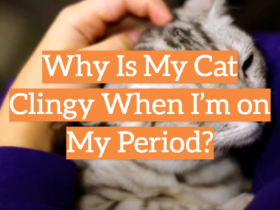

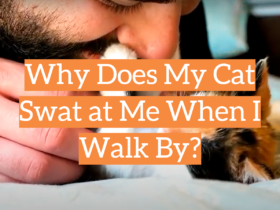
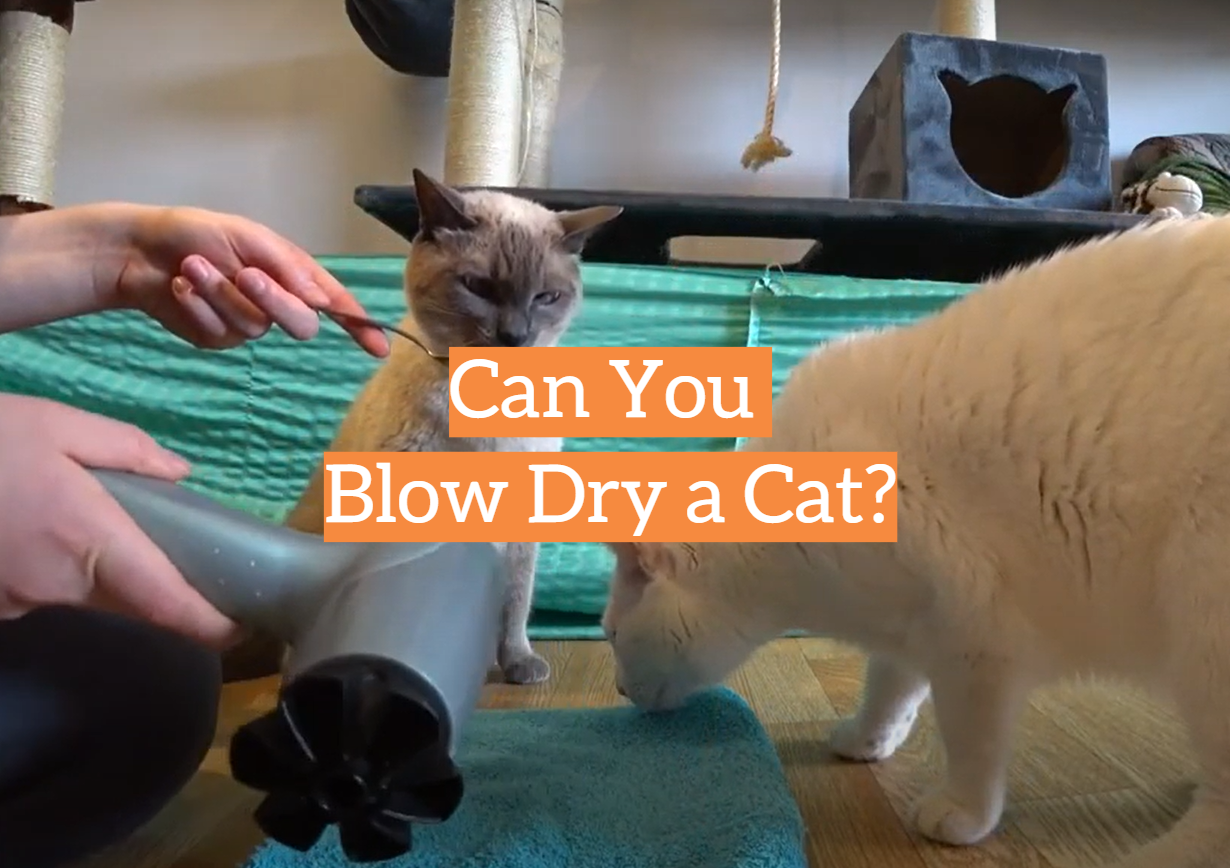
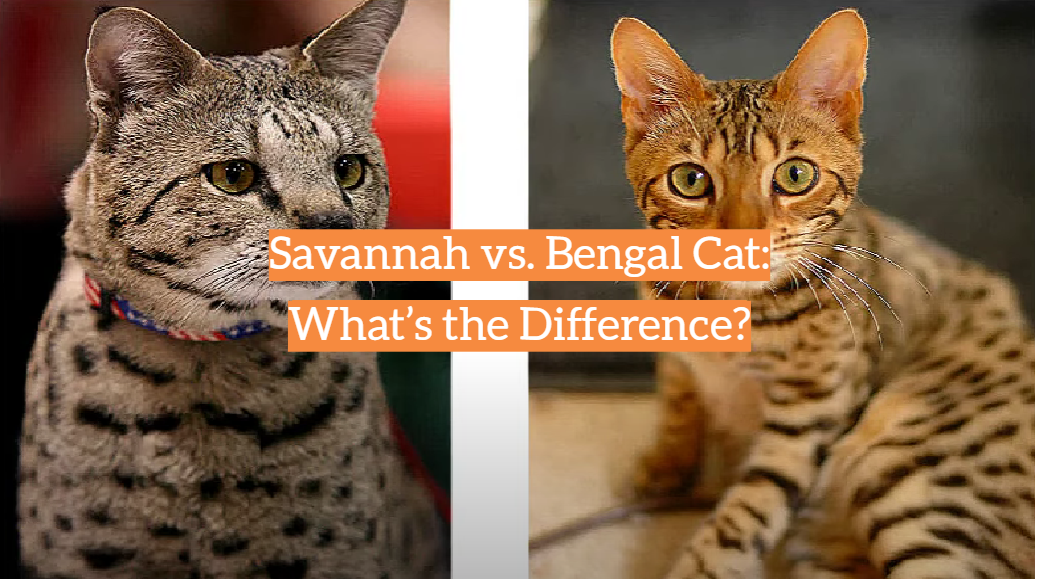
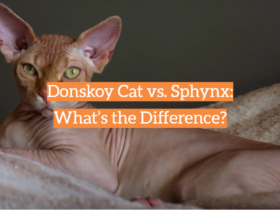
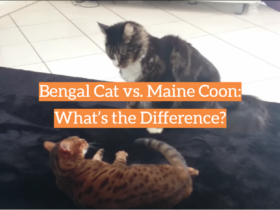
Having had both a Savannah and a Bengal cat, the differences between the two breeds are quite distinct. The Savannah’s size is one of the first things you notice—they are generally larger and more muscular than Bengals. My Savannah’s striking appearance, with its long legs and sleek coat, often draws attention. Bengals, on the other hand, are slightly smaller but equally captivating with their distinctive spotted or marbled coat patterns. It’s like having a mini wildcat with the Bengal and a more regal, statuesque feline with the Savannah.
Living with a Bengal cat after having a Savannah is a study in contrasting energy levels. While my Savannah exhibited a high level of activity and needed constant engagement, the Bengal is a ball of perpetual motion. Bengals are known for their boundless energy and love for climbing, jumping, and playing. My Bengal seems to have an endless reserve of enthusiasm, making interactive play a daily necessity to keep them content and physically engaged. It’s a dynamic shift from the slightly more reserved energy of my Savannah.
One notable difference between my Savannah and Bengal cats is their vocalization. While both breeds can be vocal, the Savannah’s meows and chirps are distinct. It’s like having a conversation with a small exotic bird. On the other hand, my Bengal communicates through a variety of vocalizations, including a distinctive, almost wild-sounding yowl. It adds a unique auditory dimension to the house, with each breed contributing its own signature sounds to our daily interactions.
The grooming routine for my Savannah and Bengal cats highlights another difference between the two breeds. Savannah cats typically have a shorter coat that requires less maintenance. Brushing my Savannah once or twice a week is usually sufficient to keep their coat looking sleek. In contrast, my Bengal’s coat is denser and might need more frequent grooming to prevent matting. The difference in grooming needs adds an extra layer of care and attention tailored to each cat’s unique coat characteristics.
When it comes to the interaction with water, the Savannah and Bengal showcase distinct preferences. My Savannah, true to their heritage, doesn’t mind the occasional encounter with water. They might even play with dripping faucets. On the other hand, my Bengal is more hesitant when it comes to water-related activities. It’s interesting to see how the breed traits play a role even in such seemingly small behaviors, adding individual quirks that make each cat a fascinating companion in their own right.
Owning both a Savannah and a Bengal cat, I’ve noticed differences in their social dynamics. My Savannah cat tends to form a strong bond with a single person, showing an almost dog-like loyalty. They follow me from room to room, always wanting to be close. On the other hand, my Bengal is more sociable with everyone in the household. Bengals are known for their friendly and outgoing nature, and my Bengal cat happily interacts with family members and guests alike. It’s interesting to observe how these breeds express their affection and build connections in unique ways.
The play styles of my Savannah and Bengal cats are like night and day. My Savannah exhibits a more calculated and deliberate playfulness. They enjoy interactive toys that mimic hunting, showcasing their intelligence and strategic thinking. In contrast, my Bengal is a whirlwind of energy, zooming around the house in spontaneous bursts of activity. Their play involves high jumps, acrobatics, and a level of unpredictability that keeps me on my toes. The difference in play styles adds a dynamic and entertaining aspect to daily interactions with each cat.
A distinct difference between my Savannah and Bengal cats lies in their coat patterns. While both breeds boast stunning coats, the Savannah typically features a coat with spots, reminiscent of their serval ancestry. My Bengal, on the other hand, showcases either spots or marbled patterns. The unique coat patterns contribute to the visual appeal of each cat, creating a distinctive aesthetic that reflects the beauty of their respective breeds.
The territorial nature of my Savannah cat stands out when compared to my Bengal. Savannah cats can be more territorial, often marking their territory by rubbing their scent glands on various objects. While my Bengal also engages in marking behavior, it’s less pronounced compared to the Savannah. Understanding and respecting their individual territorial tendencies is crucial for maintaining harmony in a multi-pet household.
The Savannah and Bengal breeds both have a penchant for climbing, but their approach to vertical space is distinct. My Savannah prefers elevated spots that provide a vantage point, reflecting their wild heritage. They enjoy observing their surroundings from a high perch. On the contrary, my Bengal has a love for climbing vertically, often scaling cat trees and shelves with enthusiasm. The difference in their climbing preferences adds a layer of variety to their environmental interactions, showcasing the unique characteristics of each breed.